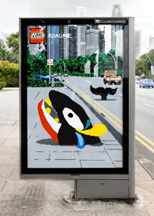 Apparel items and wearables such as t-shirts, caps, and outerwear are among the most popular promotional products available to companies wanting to reach customers. Each of us has seen a nice t-shirt with a logo on it, and we probably have one at home ourselves (I know I do), but at the end of the day we might still wonder: how effective are they? Well, the research is in. People love promotional products in general and branded items of all types attract new customers to your business, but wearables have a special place in the heart of the American consumer. Here are some data points that show just how powerful t-shirts, caps, hats, and other wearable branded items can be in promoting your brand.
Apparel items and wearables such as t-shirts, caps, and outerwear are among the most popular promotional products available to companies wanting to reach customers. Each of us has seen a nice t-shirt with a logo on it, and we probably have one at home ourselves (I know I do), but at the end of the day we might still wonder: how effective are they? Well, the research is in. People love promotional products in general and branded items of all types attract new customers to your business, but wearables have a special place in the heart of the American consumer. Here are some data points that show just how powerful t-shirts, caps, hats, and other wearable branded items can be in promoting your brand.
- Recall is highest for apparel items. According to a 2014 study, 88% of people recall the advertiser that gave them a t-shirt or hat. 57% of U.S. consumers feel more favorable about the advertiser who gave them a promotional shirt.
- Wearables are extremely popular. 48% of Americans own logoed t-shirts. They are the second most popular promotional product in America after writing instruments (56%). 25% of us own logoed caps and headwear as well.
- Attractiveness is important. 42% of people who keep promotional hats do so because they are considered attractive, and 54% of people who hold on to outerwear for the same reason.
- Outerwear has staying power. On average, U.S. consumers keep outerwear for a year and a half. When asked why they hold on to it, 75% say they do because it is useful while 52% say it’s because they find it attractive. 49% simply say that they enjoy having it.
- Certain demographics especially enjoy t-shirts. Interestingly, men (52%) are more likely to own promotional t-shirts than women (46%), while African-Americans (46%) are the most likely of all ethnic groups to keep their t-shirts, citing attractiveness of the t-shirt as a reason for holding onto it.
- Even certain regions have specific preferences for wearables. T-shirts are especially popular in the Southeast, where they generate nearly 4,000 impressions over their lifetime. Folks in Minneapolis enjoy logoed hats—they wear them as much as six times per month, creating impressions every time they go out. Outerwear is especially popular in the Midwest, where 15% of consumers report owning an item, likely due to the cold weather in winter.
Everybody loves a good t-shirt, as it turns out, especially if they think it’s attractive or useful. And in a sense, everybody wins: someone gets a new piece of apparel that they’ll enjoy and keep for a long time, and the business knows they’ll remember who gave it to them and look on them a little more favorably, perhaps even think of doing business with them. If you’re thinking of smart ways to get the word out about your company, wearables are a great choice.
We should also mention that there are a lot of different kinds of wearables you can pick from when thinking about a possible campaign or giveaway: t-shirts, sweatshirts, polo shirts, caps & hats, sweatbands, sunglasses, bandannas, flip flops, handkerchiefs, scarves, socks, gloves, jackets, earmuffs, and plenty beyond that. You can get creative with your choices and pick something appropriate for the season, a particular holiday, obviously your brand, or a special event like a trade show or a conference. Promotional products work best when they’re considered useful, attractive, and relevant (to a season or event, for example), so it’s a good idea to keep that in mind when planning your promotion.
Are you looking for branded apparel or other branded promotional items to help your company stand out from the competition? There are a lot of ways they can draw attention for your business. Get in touch with us on Twitter and Facebook or call us at 877-881-6845 and we’ll be glad to advise you on exceptional promotional products that can represent your brand with style and grace.













